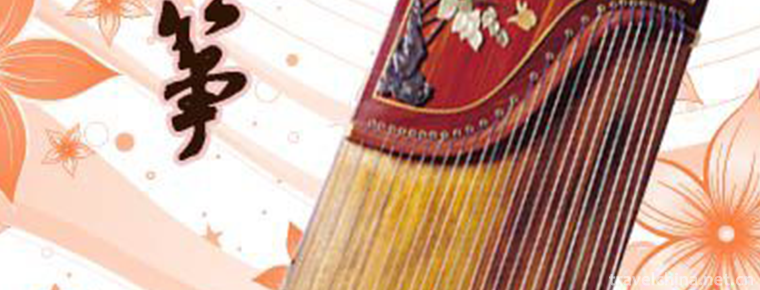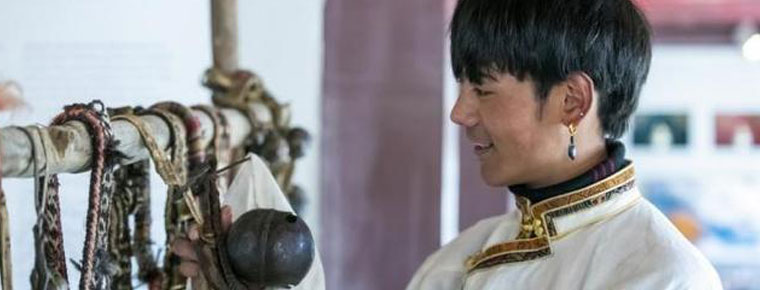2019-01-13

- By ChinaWiki.net
- Chinese Edition
- 2019-05-01
Guzheng Art
Guzheng is one of the oldest traditional stringed instruments. As early as the Spring and Autumn Period and the Warring States Period, it was prevalent in Shaanxi and Gansu. In 237 BC, when Li Si wrote to Qin Shihuang, he described the vivid scenes of Chinese traditional Zheng songs: "The husband beats the chatterbox, plays the Zheng to beat the cocktail and sings loudly, the quick-eared and the real voice of Qin." After that, Zheng was often called "Qin Zheng".
On June 7, 2008, Guzheng Art was approved by the State Council to be included in the second batch of national intangible cultural heritage list.
historical origin
According to the lost text of the ancient music document Li Yue Ji quoted by Han Dynasty Custom Tong, the early form of Zheng is "five strings build body". It is generally believed that Zheng developed from the early five strings to the twelve strings of Han Dynasty, then to the thirteen strings of Sui and Tang Dynasty, and then to the fourteen and fifteen strings of Ming Dynasty. Only in modern times did sixteen strings or even twenty-one to twenty-six strings of modern Zheng appear. In recent years, two thirteen-string Zhengs have been unearthed from the Chunqiuya grave group in Guixi, Jiangxi Province, which makes up for the deficiency of documentary records, indicating that the zither has already been introduced to southern China. It can be seen that the thirteen-stringed Zheng did not originate after the twelve-stringed Zheng, but coexisted with it long ago.
In the early stage, the performance of Zheng mainly took the form of playing and singing Zheng songs. With the rise of Xianghe Song in the Han Dynasty, the art of zither entered a new era, and gradually developed into the form of six or seven kinds of silk and bamboo instruments playing together, singers beating festivals and singing together.
Zheng was widely used to play Wu Ge and Jingchu Xiqu in Qing and Shang Dynasties, which were successively composed of harmony and music in Eastern Jin Dynasty and Southern and Northern Dynasties. The famous Wu Song Shangsheng Song is named for its use of the method of "Shangsheng Promoting Pillars". The Western songs such as "Sanzhou", "Picking Lotus", "Wu Ye Ting" are also the representative repertoires often played by Zheng. Guzheng art is constantly absorbing the nutrition of folk music and gaining vigorous vitality. By the Sui Dynasty, the position of thirteen strings in elegant music had been fully established, but the tradition of twelve strings of Zheng had flowed into Yanyue of Sui and Tang Dynasties with the Qing Dynasty's commercial music. It was not until the end of Tang Dynasty that thirteen strings of Zheng were replaced by thirteen strings of Zheng because of
Tang Zheng's rich palace tune form and grand music structure can be called the peak of traditional Zheng music. Zheng system in Ming Dynasty has increased to fourteen and fifth strings, and its range has been further expanded. Because of the influence of retro-classical thought, Zheng is regarded as popular music, and the status of musicians is low. Zheng-playing people only rely on oral instruction, but also unable to carve Zheng score, which led to the disappearance of many Zheng music traditions in previous generations. Most of the ancient songs and various forms of chord-setting have not been passed down.
Types of zither
Zheng can be divided into traditional Zheng and reformed Zheng.
According to the number of strings, the traditional Zheng can be divided into twelve-string Zheng, thirteen-string Zheng, fourteen-string Zheng, fifteen-string Zheng and sixteen-string Zheng. Henan traditional sixteen-stringed Zheng has a large radian panel and a long body. The traditional 16-stringed Zheng in Guangdong is short. Historically, traditional kites were mainly made of silk strings, and bronze strings were used in the middle of the Qing Dynasty.
The types of reformed Zheng include Shanghai 21-string Zheng, Guangzhou 18-string Zheng and 21-string Zheng, Suzhou 21-string Zheng and Beijing 21-string Zheng.
The key changes of the reform are as follows:
(1) The code-shifting pedal is developed by Shenyang Conservatory of Music. In the transfer part, pedal code-shifting is adopted.
(2) The Zheng Head is developed by Guangzhou Conservatory of Music and Shantou Instrument Factory. The tuning part of Zheng is to make the ratchet swing drive part move separately according to the need of tuning by foot sound, and push the counterpoint top ballast chord part to top pressure, so as to achieve the fast tuning of chord tuning.
(3) Yingkou fifteen-stringed pedal-type transfer kite and twenty-one-stringed key tension transfer kite. These two kinds of transfer kites are quite popular all over the country. The transfer part uses the foot (or hand) mechanism to change the tension of the string and the pitch, so as to achieve the purpose of the transfer. The foot can turn the kite twelve tones. There are two kinds of hand-switched kite, which can swing five or twelve tones respectively.
(4) Butterfly kite, developed by Shanghai Conservatory of Music. It looks like a butterfly. Zheng body is like two Zhengs together, using a resonance body. Half tone or variational tone is added between some chord spacing of a pentatonic scale fixed chord. It is also equipped with hooks to change the pitch of certain fixed tones.
(5) Style chord tune-changeable Zheng was developed by No. 1 National Instrument Factory of Suzhou. Half-tone grade is set within each effective chord length, and chord hooks are used to press the strings above the middle character when tone changing.
(6) The 26-stringed foot truncated and tuned kite was developed by the First Factory of Suzhou National Musical Instruments. In the transfer part, foot-mounted Yueshan truncation is used to change the position of part of Qianyueshan Mountain through the change of the pedal, so as to achieve the purpose of the transfer.
In addition to the Zheng introduced above, there is also a kind of zither-rolling. The earliest record in history can be found in 146 volumes of the Song Dynasty's Book of Music written by Chen Ying: "Tang Dynasty rolled Zheng, which was rolled with bamboo, because of its name. "Zheng-rolling has spread to modern times and has been seen in Guangxi, Fujian, Henan, Hebei and Shandong. The folk musical instruments of Guangxi Zhuang nationality, such as the seven-stringed piano and Fujian Wenzhuiqin, are similar to those of zither rolling.
Representative works
"Alpine Running Water", "Fishing Boat Singing Night", "Liang Zhu", "General's Order", "Yu Beauty", "Autumn Moon of the Han Palace", "Three Lanes of Plum Blossoms", "Spring River Flowering Moon Night", "Eight Boards", "Goose Goose Picking Books", "Fengzhuang Cui Qin", "Qinyun Yun", "Night Quiet Yinling", "Shuyun", "Jiangxiang Card", "Shanghe Diao", "Yinniushi", "World Tong", "Fengxiang" Song and so on.
Inheritance significance
Guzheng art has a long history, rich repertoire and wide genre. Many excellent performers from ancient times to the present are alive and well. On the basis of inheriting the tradition, they have created a large number of new and vibrant excellent repertoires, which are handed down from generation to generation. In the performance techniques, the ancestors have no reservations to teach their descendants. A group of new generations are the waves of the Yangtze River pushing forward, showing that Shandong Guzheng is broader. The future, I believe that with the development of the times, Shandong Guzheng, as one of the quintessences of Chinese culture, will get greater development.

Ask a Question
Your email address will not be published.



0 Questions